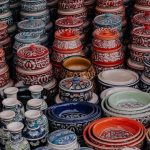The Nataraja pose of Lord Shiva has a fascinating story behind it. According to Hindu mythology, there was once a great demon named Apasmara, who was a personification of ignorance and forgetfulness. Apasmara was causing chaos and disorder in the world by making people forget their true nature and causing them to indulge in vices and immorality.
To put an end to Apasmara’s reign of chaos, Lord Shiva appeared in his Nataraja form and began to perform his cosmic dance. As he danced, his foot came down hard on Apasmara, crushing the demon and symbolizing the triumph of knowledge over ignorance.
The dance of Nataraja is also said to represent the five aspects of divine energy – creation, preservation, destruction, illusion, and liberation. The drum that Lord Shiva holds in his hand symbolizes the sound of creation, while the flame symbolizes the force of destruction. The raised foot symbolizes the force of illusion, which Lord Shiva has conquered, and the lower hand in the ‘abhaya mudra’ represents the protective power of the divine.
The Nataraja pose of Lord Shiva has become a powerful symbol of Hindu mythology, representing the triumph of knowledge over ignorance, the cosmic dance of creation, preservation, and destruction, and the complexity and interconnectivity of the universe. It continues to be depicted in art, literature, and philosophy, serving as a reminder of the power and majesty of the divine.





